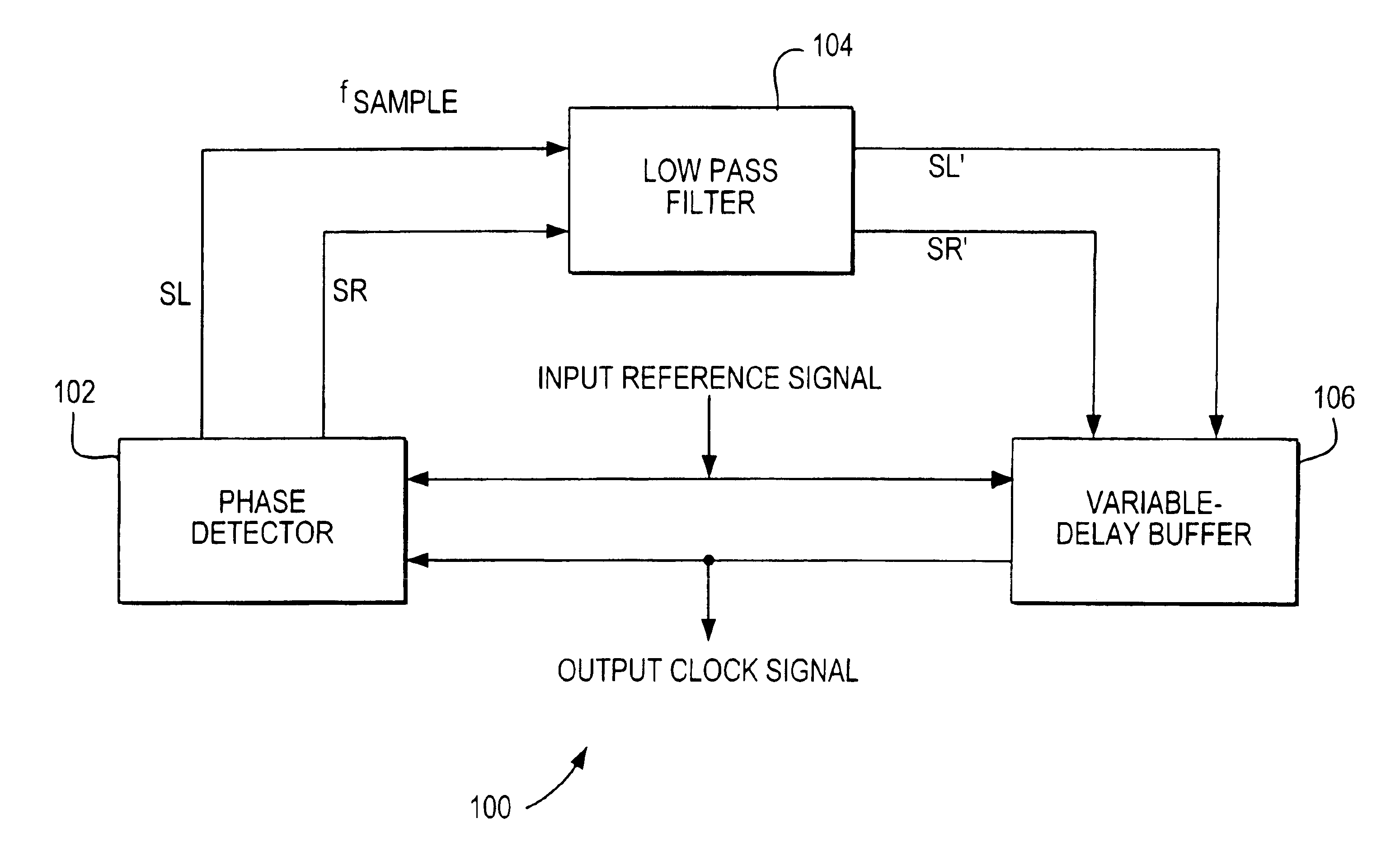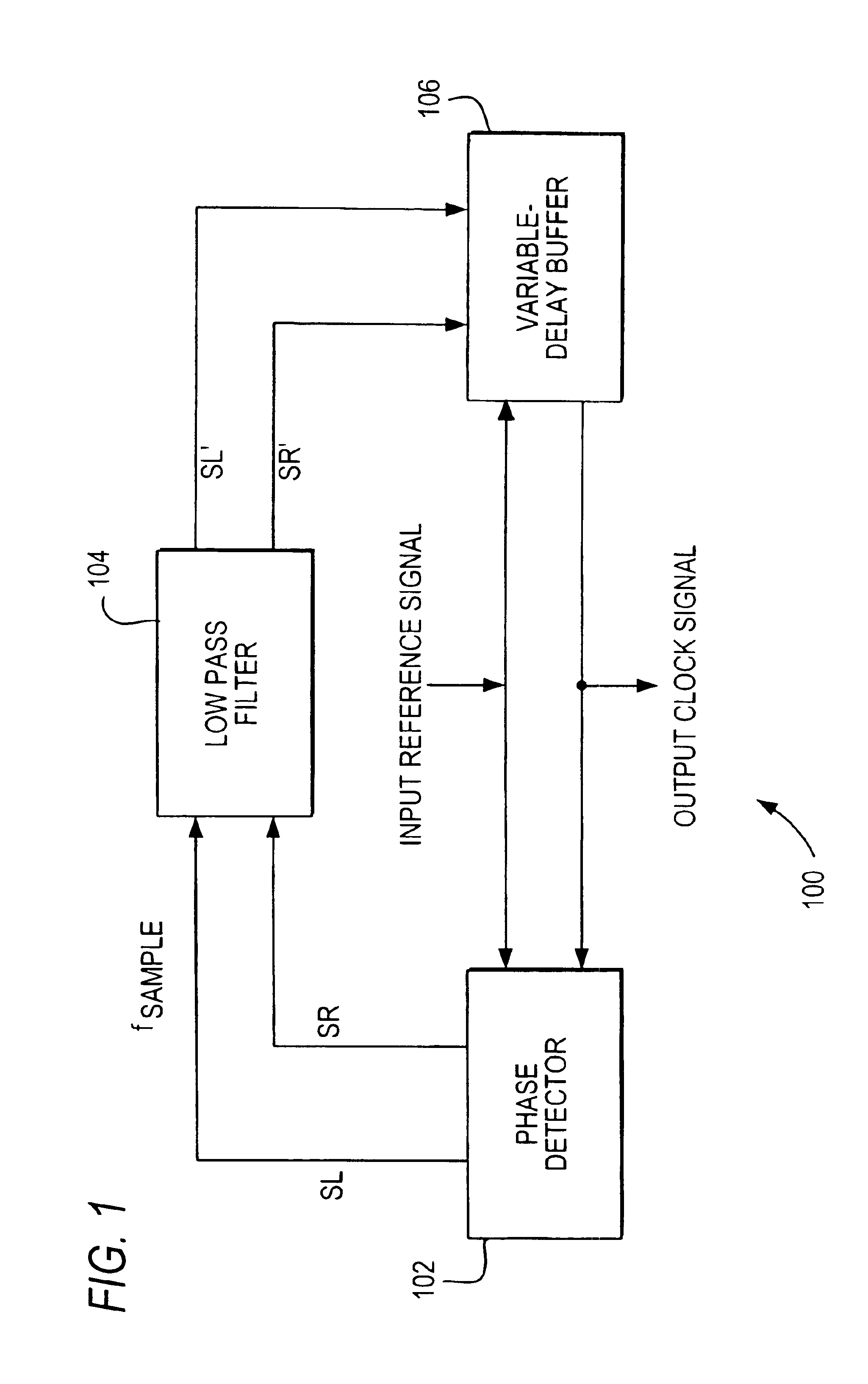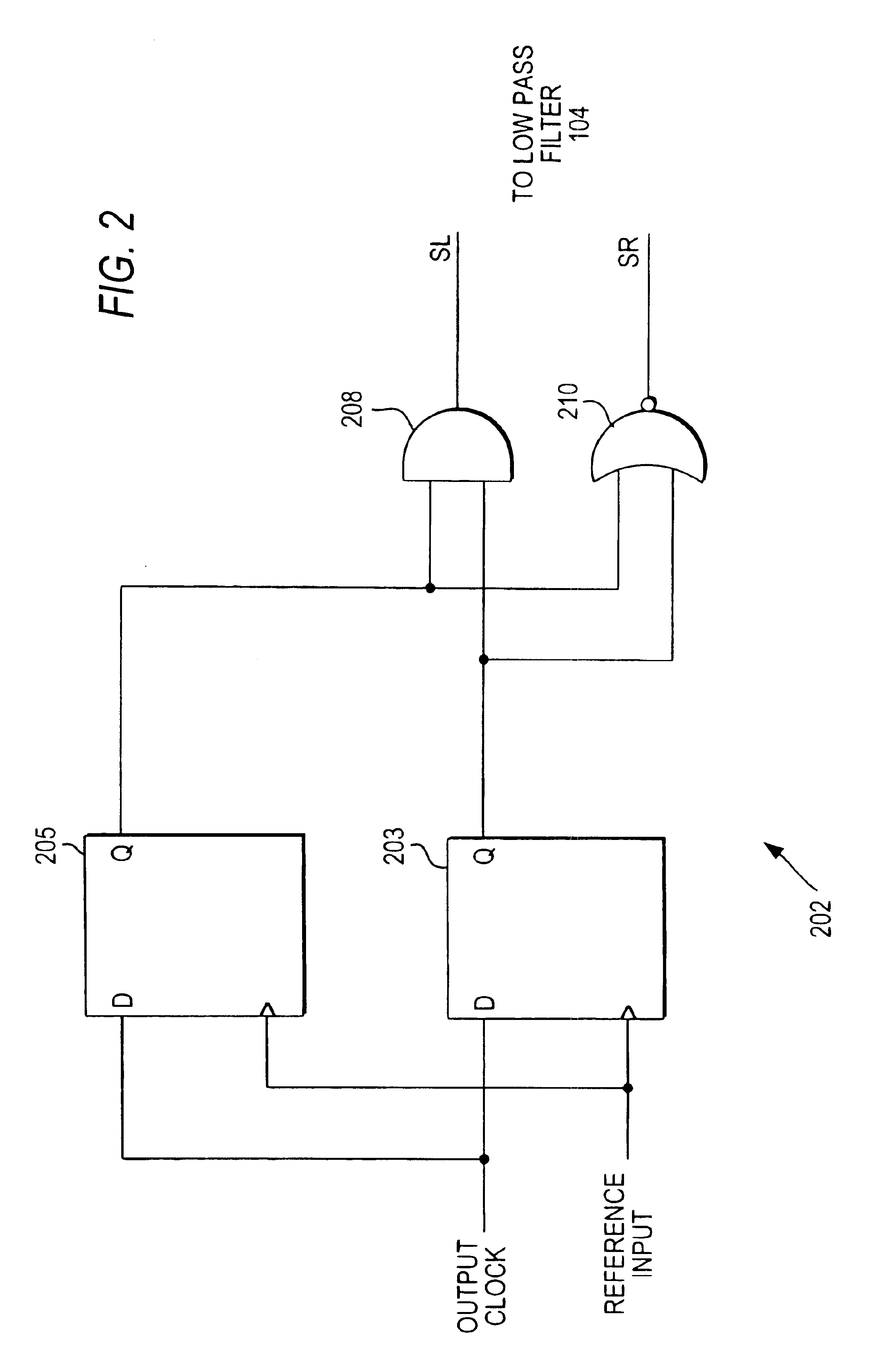Low pass filters in DLL circuits
a low-pass filter and circuit technology, applied in pulse generators, pulse manipulation, pulse techniques, etc., can solve problems such as output signal unnecessarily shifting, phase detectors providing shift signals in response, output signals that are not suitable for use, etc., to prevent the adverse effects of input nois
- Summary
- Abstract
- Description
- Claims
- Application Information
AI Technical Summary
Benefits of technology
Problems solved by technology
Method used
Image
Examples
first embodiment
[0029]In phase detector 102 (not shown), a flip-flop generates SL and SR signals. The input signal clocks the flip-flop and the output clock signal is coupled to the data input of the flip-flop. An SL signal is generated in response to a logical zero flip-flop output, while an SR signal is generated in response to a logical one flip-flop output.
second embodiment
[0030]FIG. 2 shows phase detector 102, which is constructed with two flip-flops to preferably ensure greater stability. Phase detector 202 includes flip-flops 203 and 205 coupled to AND-gate 208 and NOR-gate 210 to generate SL and SR signals, respectively. When the output clock signal is a logical one at the rising edge of the input signal with respect to both flip-flops 203 and 205, the SR signal is asserted (e.g., logical one). When the output clock signal is a logical zero at the rising edge of the input signal with respect to both flip-flops 203 and 205, the SL signal is asserted (e.g., logical zero). Alternately, phase detector 202 can be constructed such that asserted SL and SR signals can be either a logical one or a logical zero.
[0031]Returning to FIG. 1, low pass filter 104 is coupled to phase detector 102 to receive SL and SR signals. Low pass filter 104, in accordance with the invention, provides filtered versions of SL and SR signals (i.e., SL′ and SR′ signals). Low pass...
PUM
 Login to View More
Login to View More Abstract
Description
Claims
Application Information
 Login to View More
Login to View More - R&D
- Intellectual Property
- Life Sciences
- Materials
- Tech Scout
- Unparalleled Data Quality
- Higher Quality Content
- 60% Fewer Hallucinations
Browse by: Latest US Patents, China's latest patents, Technical Efficacy Thesaurus, Application Domain, Technology Topic, Popular Technical Reports.
© 2025 PatSnap. All rights reserved.Legal|Privacy policy|Modern Slavery Act Transparency Statement|Sitemap|About US| Contact US: help@patsnap.com



